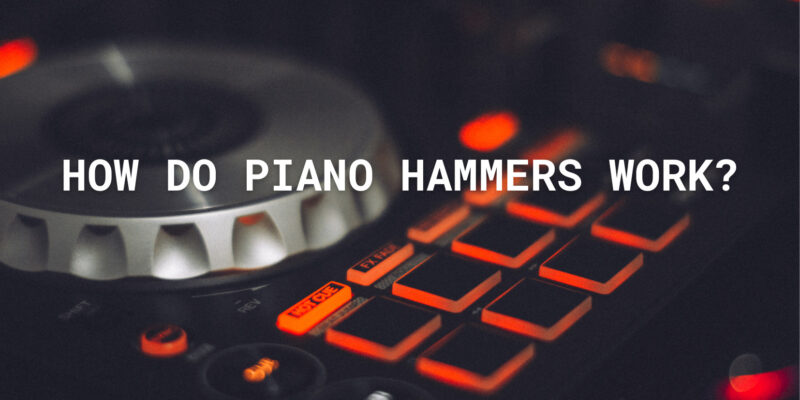Piano hammers are the intricate components that give life to the melodies produced by this iconic instrument. Every time you press a key on the piano, a complex series of actions unfolds within the instrument, culminating in the striking of strings by the hammers. In this article, we’ll take a closer look at how piano hammers work and the science behind their role in shaping the beautiful tones of the piano.
The Anatomy of a Piano Hammer
Before delving into their operation, let’s explore the physical structure of piano hammers:
- Core: At the heart of a piano hammer is a wooden core. The core’s wood type can vary but is usually selected for its acoustic properties. Common choices include maple, mahogany, and spruce. This wooden core provides the hammer with its weight and structure.
- Felt Layers: Surrounding the wooden core, several layers of felt are carefully applied. These felt layers serve a crucial role in dampening the impact of the hammer on the strings. The thickness and density of these felt layers can be adjusted during the hammer-making process to influence the piano’s tone.
- Outer Covering: The outermost layer of the hammer is typically made of a softer felt material. Sometimes, additional materials like leather are added to this layer to fine-tune the piano’s sound. This outer layer plays a vital role in shaping the character of the tone produced when the hammer strikes the strings.
- Shaping: Skilled craftsmen meticulously shape and taper the hammers to ensure they strike the strings with precision. This shaping process is an art that aims to create a balanced and responsive tone.
The Mechanics of Piano Hammers
Now, let’s explore how these components come together to produce the beautiful sounds of the piano:
- Key Press: When you press a key on the piano, it causes a complex chain reaction within the instrument. The key is connected to a series of levers and pivots.
- Action Mechanism: The key’s movement is transferred to the piano’s action mechanism, which includes the hammer. When the key is pressed, the action mechanism propels the hammer towards the strings.
- Striking the Strings: As the hammer approaches the strings, its wooden core provides the necessary mass and momentum. The felt layers and shaping of the hammer influence the way it strikes the strings.
- String Vibration: When the hammer makes contact with the strings, it sets them into motion. This vibration generates sound waves, creating the musical note you hear.
- Release and Damping: After striking the strings, the hammer quickly retreats. This movement is facilitated by springs and levers in the action mechanism. As the hammer retreats, the dampers come into contact with the strings, stopping their vibration and thus ending the sound.
- Repetition: The entire process repeats rapidly as you play different notes on the piano. The combination of precise timing, hammer design, and string properties produces the rich and varied tones of the piano.
Conclusion
Piano hammers are at the core of what makes this instrument so captivating. Their carefully designed structure and the mechanics behind their operation ensure that each keypress results in a beautifully resonant note. Understanding how piano hammers work provides a deeper appreciation for the craftsmanship and science that go into creating the enchanting melodies we enjoy on this timeless musical instrument.


